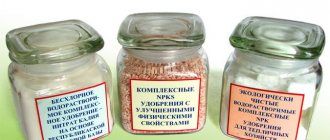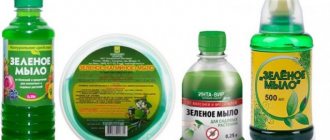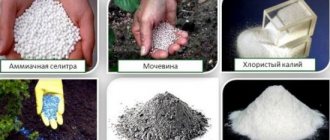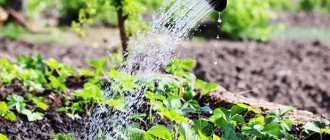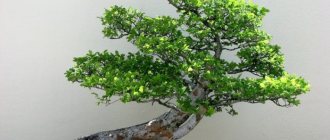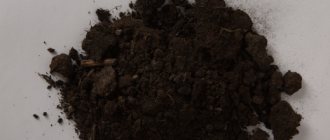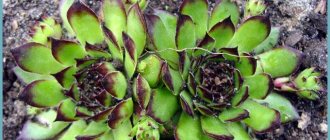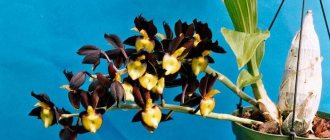Author of the article
Daria Vorontsova
Reading time: 32 minutes
AA
In order for seedlings to grow and develop properly, they vitally need fertilizers. During the development of seedlings, regular feeding is necessary. With their help, you can enrich the soil composition and compensate for the deficiency of essential microelements.
Place in the general classification
Experts use this scheme, which makes it easier to understand the purpose and function of fertilizing:
- Simple - include one element. It can only be nitrogen, phosphorus or potassium, respectively, simple fertilizers can be nitrogen, phosphorus or potassium. They only act in one direction. As a rule, an increase in a single element increases the deficiency of another, so such supplements cannot be considered exhaustive. They are often combined with each other, preparing the compositions independently, or adding them one by one.
- Complex - they combine 2 or 3 main elements in the formula, so they better satisfy the plant’s need for essential minerals.
To understand what kind of nitrogen-potassium fertilizers they are, you need to understand the terminology. They are classified as mineral complex fertilizers. The composition includes inorganic elements that affect the functions of plants. The action is determined by the proportion in which macronutrients are present. From the name you can understand that the main active ingredients of this group are nitrogen and potassium. Sometimes an organic component can be added to the complex, which will only expand the range of actions.
Properties of nitrogen-phosphorus-potassium fertilizers
A complex fertilizer consisting of three elements has the following properties:
- helps strengthen seedlings of cultivated plants after they are planted in open ground;
- extends the shelf life of harvested crops in cellars and basements;
- helps maintain soil fertility;
- increases the volume of harvested crops.
Fertilizing does not have a negative effect on the human body when it consumes fruits fertilized with these elements.
Manufacturing technology
Combined compositions of two or more main components are also called complexly mixed. They are produced in production using a single technological process, the result of which is a common granule that includes both elements. Primary raw materials are subject to chemical and physical processing.
The ratio of nitrogen and potassium varies among this group. You can see it on the packaging in the form of the standard formula N:K:F (nitrogen:potassium:phosphorus). If the first and last elements have natural digital values, and the middle one is 0, then the fertilizer is a nitrogen-potassium fertilizer.
Combined complexes contain very little so-called ballast substances. They are needed so that the substance can be stored longer or are simply a by-product of the complex synthesis reaction that does not affect the nutritional parameters of the soil. The fewer there are, the more nitrogen and potassium will be in the volume. This is very important when it comes to large purchases and transportation of products, unloading and ease of application into the soil.
There is another type - mixed complexes. They are obtained as a result of dry mixing of individual components at an agricultural company or farm immediately before application. On the one hand, this requires labor, but on the other, it makes it possible to produce precisely such compositions in which the proportion of nitrogen and potassium is exactly what is needed at this stage.
Organic fertilizers for indoor plants
Organics are natural fertilizers, so-called organic compounds of plant or animal origin. These include pet excrement, bird droppings (geese, chickens, ducks, pigeons), peat bogs, and plant composts.
It is organic fertilizers that contain all the necessary nutritional elements that improve air, water and natural-climatic balance, and significantly improve the structure of the soil intended for growing indoor plants. Organic matter is favorable soil for the absorption of mineral fertilizers, creating various chemical compounds that accelerate the development of beneficial microorganisms.
The role of macronutrients
Each element has its own function. Specialists can determine a deficiency or excess of a macronutrient by external signs, but sometimes laboratory analysis is also necessary. To make it easier to find out whether a crop needs the addition of nitrogen-potassium complexes, you need to understand how they act and what they affect.
Nitrogen
Nitrogen is the main substance for plant development. It is considered the main building material, without which the mass of the plant organism will not increase. Many vital functions come with its participation.
Main role:
- participates in metabolism;
- ensures active growth of young shoots and leaves;
- part of proteins, chlorophyll, etc.
Signs of deficiency of this substance are:
- weak growth of shoots, they are short and may have an irregular shape;
- insufficient volume of foliage, leaves become pale;
- insufficient crown branching;
- weak bud formation;
- young leaves acquire a red tint and fall off, and old leaves turn yellow, starting from the midrib;
- small fruits that fall early before they ripen.
Potassium
Potassium performs many functions in plant life:
- improves the condition of the cytoplasm, normalizes swelling processes, making viscosity optimal;
- activates photosynthesis and the formation of organic acids in plant tissues;
- participates in carbohydrate and nitrogen metabolism;
- increases the activity of enzymes such as sucrase and amylase;
- enhances the accumulation of starch in root vegetables;
- improves the winter hardiness of crops due to the presence of sugars and increased osmosis inside the cells;
- increases plant immunity;
- improves the keeping quality of the crop.
Potassium deficiency can be judged by the following signs:
- change in foliage color: young foliage acquires a bluish tint, and old foliage turns yellow or brown;
- the appearance of dark spots on the foliage, dryness along the edges, heterogeneity and “corrugation” of the leaves;
- stopping plant growth;
- rapid loss of turgor in the absence of rain or watering.
At different stages of growth and for different types of crops, the need for both of these elements changes.
The importance of each component for plants
The benefits of nitrogen-phosphorus-potassium fertilizer are due to the effect that each element has on the crop.
Nitrogen is involved in the growth of the green part and fruiting. A deficiency of this element slows down growth; an excess is fraught with the accumulation of nitrates in the crop, a decrease in its quality, slower ripening of shoots, and poor winter hardiness. If the soil is oversaturated with nitrogen, you will have to collect abundant tops instead of harvesting. Considering that nitrogen supplements are quickly washed out of the soil, they are applied in the spring before sowing.
Potassium is responsible for the plant's resistance to drought and excessive humidity, temperature changes and other stressful situations. Potassium fertilizers help the crop to ripen and prolong its shelf life, and increase the winter hardiness of perennial plants.
Phosphorus in the early phases of plant development accelerates the growth of the root system, which has a beneficial effect on the development of the crop. Phosphorus supplements increase the plant’s resistance to stress and accelerate entry into the reproductive phase. Excess phosphorus interferes with the plant's absorption of zinc.
In addition to the basic nitrogen-phosphorus-potassium fertilizers, plants need magnesium, calcium and other microelements. Calcium ensures metabolism. Must be in balance with magnesium, potassium and boron.
Yeast infusion has a good effect on plants. It is enough to treat the soil with a 1% solution to get the same effect as from a standard dose of a complex additive.
The need for complex application
Hobbyists often have a question about the need to use nitrogen-potassium fertilizer, and not nitrogen and potassium separately. This is explained by the fact that at a certain level of one element, a proportional change in the dosage of the other is necessary, since their consumption is directly interrelated. For example, potassium deficiency increases with the active supply of nitrogen to the soil. They both participate in different reactions, and if one trace element is missing, then these processes will not be able to complete normally.
An excess of nitrogen ions with a lack of potassium will lead to the accumulation of unprocessed nitrite in the tissues, which will poison the flower or tree from the inside.
Advantages
Nitrogen-potassium mineral fertilizers have a number of advantages. The main thing is balance, since vital components are supplied in the right combination. Another advantage is the narrow specialization, since there are different types of complexes with nitrogen and potassium on sale:
- seasonal - for spring, summer and autumn;
- unidirectional - for flowers, for potatoes, for conifers, etc.;
- highly concentrated, which will ensure low costs and ease of use.
They differ in the content of each component and the presence of ballast or auxiliary substances.
You can choose any suitable form:
- granules;
- solution;
- water soluble powder.
This makes fertilizing simple and applicable for professionals and amateurs alike.
Types of fertilizing
All additives can be divided into two groups – organic and mineral. The former require pre-treatment, which is usually quite lengthy. Otherwise, they may harm the plant.
Types of fertilizers
Mineral fertilizers consist of inorganic components and are completely ready for use according to the instructions. You can purchase them at any specialized store. In turn, such additives are divided into simple (single-component) and mixed, containing two or more elements.
The main nutrients needed by every plant are potassium, nitrogen and phosphorus. Accordingly, mineral supplements include potassium, nitrogen, phosphorus and complex ones. Each substance has its own effect on the flora of a garden plot or windowsill.
Seasonality and species requirement
Fertilizing with nitrogen-potassium fertilizer depends on the season. For example, nitrogen consumption is highest at the stage of development of plant vegetative organs. Cell division directly depends on this macronutrient, so when there is a deficiency, growth stops. Then, throughout the season, the supply of this element should be more uniform.
It should be taken into account that in the form of nitrate compounds the release and loss of nitrogen occurs very quickly, so it is better to apply such complexes often, but little by little. In the form of ammonium, this substance takes much longer to decompose, so such compounds are added less frequently.
When it comes to potassium, the ability to grow healthy, viable crops depends on whether it is available to the seedlings during the first two weeks after emergence. The maximum demand occurs at the time of rapid growth of biomass. In flax, potatoes and cereals, consumption stops at the beginning of flowering. For other varieties, the supply should be more uniform.
The most potassium-loving plants are beets, potatoes, corn, sunflowers, and corn. They consume this element more actively than beans, cereals, herbs, etc.
Phosphorus
Phosphorus in plants is found in the form of organic compounds, as well as calcium, potassium, magnesium and sodium phosphates. The importance of phosphorus in plant life is very diverse.
Phosphorus deficiency manifests itself in stunted plant growth and development, leaf curling, and the formation of reddish-violet or brownish-purple spots. It can affect the timing of flowering of plants: they bloom later than expected or do not bloom at all.
With an excess of phosphorus, a decrease in the size of the plant, wrinkling of the lower leaves, their yellowing, death and premature separation from the stem are observed.
up
up
How to deposit
Nitrogen-potassium fertilizers can be applied in different ways, depending on the season. The main recommendations are:
- In spring - before plowing the ground or directly into planting holes before planting. Application into holes is more labor-intensive, but the most economical and effective.
- In summer - along with watering, so solutions are preferable rather than granules, which are more difficult to dissolve in water.
- In autumn - after harvesting, apply to replenish and restore the balance of soil nutrients. The granules are distributed over the surface before digging up the area.
In summer, it is also possible to apply the complex during hilling, but it is desirable that the granules do not directly touch the shoots or foliage.
In the warm season, foliar feeding is also sometimes used. This means that the ground mass is treated with the solution. The method is perfect for cases of severe deficiency of any of the elements included in the composition, since absorption and restoration proceed much faster than with absorption through the root system.
Excess
When using nitrogen-potassium fertilizers, the principle of “rational feeding” is important. It involves controlling the application of macroelements to prevent their excess in the soil. A sign that the soil is oversaturated may be the appearance of pale veins on the leaves, which turn brown over time, after which the leaf blade falls off. The growth of tops to the detriment of flowering and fruit formation is also considered one of the features of excessive application of complexes with nitrogen and potassium.
What fertilizers are considered phosphorus-potassium fertilizers?
Mineral fats, which simultaneously contain both elements, are called phosphorus-potassium. The presence of these elements in the soil directly determines the full growth and abundant fruiting of cultivated plants. A mineral such as nitrogen is used at the stage of planting seedlings in the ground or germinating seeds. Potassium-phosphorus fertilizers are necessary for plants at the stage of budding and fruit formation. Each element has its own purpose, so it is recommended to adhere to the specified time limits for their application to the soil, so as not to harm the crops and obtain the desired result.
In addition, the use of a particular mineral depends on the composition of the soil in each specific area and on the crops that are planned to be grown.
Forms
When choosing a preparation for fertilizing, you need to pay attention not only to the name of the nitrogen-potassium fertilizer, but also to the formula reflecting the mass fraction of each component.
The following types of nitrogen-potassium complexes can be found on sale:
- Potassium nitrate (potassium nitrate) is a nitrogen fertilizer that contains potassium salt of nitric acid. The substance dissolves well in water, while it is non-volatile and without a distinct odor. This compound is practically not harmful to living organisms. Used as a top dressing for vegetable, fruit, flower and ornamental crops. As a rule, the concentrations of different solutions are indicated in the instructions for the drug.
- Potassium cyanamide is used very rarely and is difficult to find on sale. This is due to the fact that it has a toxic effect on humans and animals. It is a white powder with a noticeable odor of kerosene. When working with it, you must follow safety precautions: work with gloves and goggles, protect your respiratory organs with a respirator. Because of these features, it is used only in industrial cultivation of crops.
Potassium nitrate
Potassium cyanamide
Both forms can be used at the root or as a spray.
Types of fertilizers containing nitrogen
Fertilizers are called nitrogen fertilizers if they contain nitrogen as the main component.
Fertilizers are classified according to two main characteristics.
According to the state of aggregation:
- solid - in the form of granules, used, as a rule, in the spring and summer due to rapid leaching from the soil;
- liquid - in the form of solutions, easily absorbed by plants and evenly distributed in the soil.
Terms of use
When using nitrogen-potassium fertilizers, you must remember the following points:
- Transportation and storage must take place under the condition that the packaging is sealed and insulated from moisture, since the compound is hygroscopic. It absorbs moisture and not only becomes soggy in structure, but also loses its chemical properties.
- When dissolved in water, heat is absorbed and the solution turns out cool. Plants do not like cold liquids getting on their roots or foliage, so part of the water must be heated so that the temperature of the solution is a couple of degrees higher than the environment.
- It is necessary to ensure that during work this substance does not come into contact with the skin or eyes. When diluting, it is recommended not to lean low over the container and not inhale the vapors.
- It is best to prepare the composition not in a metal bucket or container, but in plastic.
- All prepared solution must be used on the same day. It cannot be stored, as the nitrogen compounds will erode or create new complexes that are not absorbed by plants.
If you adhere to all these rules, then you can get excellent results when using nitrogen-potassium fertilizers.

